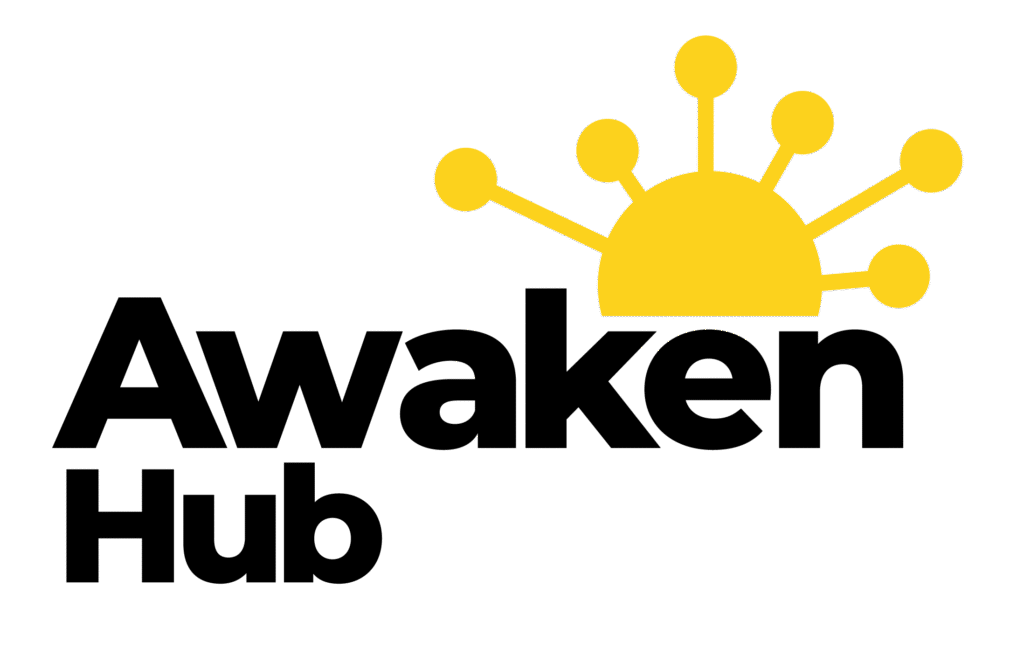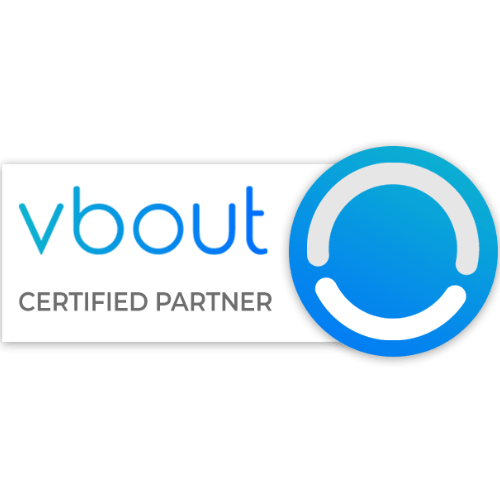Inbound vs. Outbound Leads: Building Trust and Credibility
Discover the key differences between inbound and outbound leads, and learn strategies to generate inbound leads for building trust and credibility.
Introduction
Inbound leads are the lifeblood of any successful digital marketing strategy. In simple terms, inbound leads are potential customers who show an interest in your products or services through your marketing efforts.
What are the inbound leads?
Inbound leads are prospects attracted to your business through content marketing, SEO, social media, and other strategies.Why are inbound leads important?
They help build trust and credibility because prospects come to you knowing they have a problem and believing you might have a solution.
Imagine this: You publish a blog post, and a week later, someone fills out a form on your website to learn more about your services. That’s an inbound lead. They found you because you provided relevant content that answered their questions.
This approach is important because it prioritises building trust and credibility before any direct contact. Prospects engage on their terms, increasing the likelihood of meaningful interactions and long-term relationships.
By focusing on inbound lead generation, your small business can create a lasting foundation for consistent growth and customer loyalty. Delve into the strategies and tactics that can transform your digital marketing efforts and capture the leads that your business truly deserves.

What are Inbound Leads?
Inbound leads are potential customers who find your business through your marketing efforts rather than you reaching out to them directly. They come to you because they are interested in what you offer. This approach is all about creating valuable content that attracts and engages your target audience.
Inbound marketing includes several strategies such as content marketing, SEO, social media, and email marketing. Let’s break these down:
Content Marketing
Content marketing is the backbone of inbound lead generation. It involves creating useful and engaging content like blog posts, videos, infographics, and whitepapers that address the needs and pain points of your audience. For example, a well-written blog post about “Top 10 SEO Tips for Small Businesses” can attract business owners looking to improve their online presence.
SEO
Search Engine Optimization (SEO) ensures that your content is easily found on search engines like Google. By optimizing your website and content with relevant keywords, you can improve your search rankings and attract more organic traffic. For instance, using keywords like “best digital marketing strategies” can help your content appear when someone searches for digital marketing tips.
Social Media
Social media platforms like LinkedIn, Facebook, and Twitter are powerful tools for distributing your content and engaging with your audience. By sharing valuable posts, participating in discussions, and responding to comments, you can build a community around your brand.
Email Marketing
Email marketing involves sending targeted, value-driven content to your subscribers. It helps nurture relationships with your audience by providing them with relevant information and offers. For example, a monthly newsletter with expert tips and exclusive offers can keep your audience engaged and interested in your products or services.
Types of Inbound Leads
Not all inbound leads are the same. They can be categorised into different types based on their level of interest and readiness to buy.
Marketing Qualified Leads (MQLs)
MQLs are individuals who have shown interest in your content but are not yet ready to make a purchase. They might have downloaded an eBook or signed up for your newsletter. These leads need further nurturing before they are ready for a sales conversation.
Sales Qualified Leads (SQLs)
SQLs are leads who have expressed an obvious interest in purchasing your product or service. They might have filled out a contact form or requested a demo. These leads are ready to be contacted by your sales team.
Product Qualified Leads (PQLs)
PQLs are those who have used your product, usually through a free trial or freemium model, and have shown interest in upgrading to a paid version. For example, a user who signs up for a free trial of your software and then inquires about pricing options is a PQL.
Service Qualified Leads
Service qualified leads are existing customers who have shown interest in additional products or services. For instance, a customer using your marketing software who expresses an interest in your new analytics tool during a support call is a service qualified lead.
Inbound leads are crucial for building trust and credibility with your audience. By providing valuable content and engaging with your prospects, you can create lasting relationships that drive consistent growth for your business.

Next, we’ll dive into the realm of outbound leads and explore how they differ from inbound leads in terms of strategy and execution.
What are Outbound Leads?
Outbound leads are prospects that your business reaches out to directly. Unlike inbound leads, where potential customers come to you, outbound leads are generated through proactive marketing efforts. This approach is often referred to as outbound marketing.
Types of Outbound Leads
Outbound marketing involves various techniques to engage with potential customers who haven’t yet shown interest in your product or service. Here are some common methods:
Cold Calling: This is when you contact potential customers via phone without any prior interaction. It’s a direct approach but can be met with resistance.
Email Marketing: Sending unsolicited emails to potential customers. This method requires a well-crafted message to avoid being marked as spam.
Direct Mail: Physical mail sent to potential customers’ addresses. While less common today, it can still be effective in certain markets.
Outbound leads can be categorized into three types based on their level of interest and readiness to buy:
Cold Leads: These are individuals or companies that have had no prior contact with your business. They are often sourced from lists or databases and require the most effort to convert into customers.
Warm Leads: These leads have had some interaction with your business, such as attending a webinar or responding to a social media post. They are more likely to be interested in your product or service than cold leads.
Hot Leads: These are prospects who have shown a strong interest in your product or service and are close to making a purchase decision. They often respond positively to follow-up efforts and are the most likely to convert into paying customers.
Outbound marketing allows you to control the timing and messaging of your outreach efforts. However, it often requires more resources and can be seen as intrusive by potential customers.
Next, we’ll explore the key differences between inbound and outbound leads, focusing on control, timing, engagement, cost, and ROI.
Key Differences Between Inbound and Outbound Leads
Control and Timing
Inbound leads are all about letting the prospect take control. They decide when and how to engage with your content. This means you have less control over the timing of when they come to you. For example, someone might find your blog post months after it’s published. This can be slow, but allows for a more natural, less pressured interaction.
Outbound leads, on the other hand, put the control in the marketer’s hands. You decide when to reach out, be it through cold calls, emails, or direct mail. This can be faster, but also more intrusive. Imagine getting a cold call during dinner – not the best timing, right?
Engagement and Trust
Building trust is crucial for any business. Inbound leads naturally build trust by providing valuable content that prospects seek out. They come to you because they trust your expertise. According to research, inbound leads are generally higher quality because they are already interested and engaged with your content.
Outbound leads often involve interruption marketing. This means you’re reaching out without prior engagement. While this can be effective, it can also be seen as intrusive. Think of it like someone knocking on your door to sell something when you’re not interested.
Cost and ROI
When it comes to cost, inbound marketing often has a higher initial investment. You need to create quality content, optimize for SEO, and maintain a strong online presence. However, the long-term ROI can be significant. Evergreen content, like blog posts and videos, can generate leads for years after they’re published.
Outbound marketing usually has a higher cost per lead. You’re paying for ads, lists, and tools to reach out to prospects. The ROI can be quicker, but it’s often short-term. Once the campaign ends, the leads stop coming in.
Longevity of Campaigns
Inbound campaigns have a longer lifespan. Content like blog posts, infographics, and videos can continue to attract leads long after they’re created. This provides ongoing value and a steady stream of leads over time.
Outbound campaigns are typically finite. You run an ad, send out emails, and once the campaign ends, so does the lead flow. This makes them more short-lived compared to the ongoing nature of inbound efforts.
In summary, inbound leads offer a more natural, trust-building approach with long-term benefits, while outbound leads provide quicker, more controlled results but can be more intrusive and costly. Each has its place in a balanced marketing strategy. Next, we’ll dive into effective strategies for generating inbound leads through content creation, SEO, and more.
Strategies for Generating Inbound Leads
Generating inbound leads involves several key strategies that focus on attracting and engaging potential customers. Here’s how you can effectively generate inbound leads:
Content Creation
Creating valuable content is the cornerstone of inbound lead generation. Here are some types of content that can attract and engage your audience:
Blog Posts: Write blogs with your ideal customer in mind. Ensure your blogs are optimised for search intent to attract relevant traffic. For example, if you’re targeting small business owners, write about topics like “Top Marketing Strategies for Small Businesses.”
Videos: YouTube is the second most popular search engine. Create videos that answer your audience’s questions and include strong calls to action. For instance, a video tutorial on “How to Improve Your Website’s SEO” can draw in potential leads.
Infographics: Visual content like infographics can make complex information easier to digest. Share these on social media to increase engagement and drive traffic to your site.
Whitepapers: Offer in-depth guides or whitepapers in exchange for contact information. This not only provides value but also captures leads interested in your expertise.
SEO Best Practices
Search Engine Optimization (SEO) is crucial for getting your content discovered. Here’s how to optimize your content for search engines:
Keyword Optimization: Use relevant keywords that your target audience is searching for. Tools like Google Keyword Planner can help you find these keywords.
On-Page SEO: Ensure your website is technically sound. This includes optimizing title tags, meta descriptions, and using header tags (H1, H2, etc.) properly.
Link Building: Reach out to thought leaders in your industry and ask them to contribute to your content. This not only builds backlinks but also enhances your credibility.
Social Media Engagement
Social media platforms are excellent for reaching and engaging your audience. Here’s how to make the most of them:
Platform Selection: Focus on platforms where your ideal customers spend the most time. For B2B, LinkedIn might be the best choice, while Instagram could be better for B2C.
Audience Targeting: Use the targeting features of social media platforms to reach specific demographics. Facebook Ads, for example, allows you to target users based on interests, location, and behaviour.
Content Customization: Tailor your content to fit the platform and audience. For example, use visually appealing images and short videos on Instagram, while sharing detailed articles and professional insights on LinkedIn.
Lead Capture Tools
Capturing leads effectively is essential for inbound marketing. Here are some tools you can use:
Landing Pages: Design dedicated landing pages for specific campaigns. Use compelling headlines and clear calls to action to encourage visitors to provide their contact information.
Forms: Simple and easy-to-fill forms can capture essential lead information without overwhelming the visitor.
Pop-Ups: Use pop-ups strategically to capture leads without disrupting the user experience. For example, a pop-up offering a free eBook in exchange for an email address can be very effective.
Lead Magnets: Offer something valuable in exchange for contact information. This could be an eBook, a webinar, or a discount code.
Email Marketing Automation
Email marketing is a powerful tool for nurturing leads. Here’s how to use it effectively:
Segmentation: Divide your email list into segments based on criteria like industry, interests, and behaviour. This allows you to send more targeted and relevant emails.
Custom Sequences: Create email sequences that match specific actions or triggers. For example, if someone downloads a whitepaper, send a follow-up email with additional resources.
Value-Driven Content: Your emails should provide value, not just promotions. Share tips, insights, and resources that help your audience solve their problems.
By implementing these strategies, you can attract, engage, and convert more inbound leads effectively. Next, we’ll address some frequently asked questions about inbound leads to further clarify this approach.
Frequently Asked Questions about Inbound Leads
What is meant by inbound leads?
Inbound leads are potential customers who find and contact your business through content you’ve created and shared. Unlike outbound leads, where you reach out to them, inbound leads come to you. They might find you through a blog post, social media, or a search engine.
For example, if someone reads an article on your website and fills out a contact form, they’ve become an inbound lead. This method builds trust because the lead has shown interest in your content and sought you out.
How do you generate inbound leads?
Generating inbound leads involves creating valuable content that attracts your target audience. Here are some key strategies:
Content Creation: Write blog posts, create videos, or design infographics that address your audience’s needs and questions. For instance, a blog post about “How to Improve SEO” can attract business owners looking to boost their online presence.
SEO Best Practices: Optimize your content for search engines. Use keywords that your audience is searching for. A well-optimized article can rank high on Google, bringing in organic traffic.
Social Media Engagement: Share your content on social media platforms where your audience hangs out. Engage with them through comments and messages.
Lead Capture Tools: Use landing pages, forms, and pop-ups to capture contact information. Offer something valuable, like a free eBook, in exchange for their email.
Email Marketing Automation: Segment your email list and send customized sequences based on their actions. For example, if someone downloads your eBook, follow up with related tips or a case study.
What is the difference between inbound and outbound leads?
Inbound leads and outbound leads differ in several key ways:
Control and Timing: Inbound leads control when and how they engage with your content. Outbound leads are contacted by you, often when they are not expecting it.
Engagement and Trust: Inbound methods build trust over time through valuable content. Outbound methods can feel intrusive and may not build the same level of trust.
Cost and ROI: Inbound lead generation can be more cost-effective in the long run, as content can continue to attract leads over time. Outbound campaigns might have higher upfront costs and can be less sustainable.
Longevity of Campaigns: Inbound strategies like blog posts and videos can remain relevant and continue to attract leads indefinitely. Outbound campaigns, such as email blasts or cold calls, have a finite lifespan.
By understanding these differences, you can choose the best approach to fit your business needs and goals.
Next, we will conclude our discussion by summarizing the benefits of inbound leads and how The Digital Projects can help you achieve sustainable growth and streamlined marketing.
Conclusion
Inbound leads offer a sustainable, cost-effective way to build trust and credibility with your audience. Unlike outbound strategies that can be intrusive and short-lived, inbound methods focus on creating valuable content that draws potential customers to you.
Summary
Inbound lead generation revolves around attracting prospects through quality content, SEO, social media, and other non-intrusive methods. By providing useful information, you naturally build trust and credibility with your audience. This approach leads to higher engagement and long-term relationships.
Benefits of Inbound Leads
- Non-Intrusive: Inbound strategies like blog posts and videos attract prospects without interrupting their day.
- Cost-Effective: Creating content and optimizing for search engines often costs less than outbound methods like cold calling or email blasts.
- Sustainable Growth: Evergreen content can continue to attract leads long after it’s published.
- Higher Trust and Credibility: Providing valuable information builds a relationship with potential customers, making them more likely to convert.
The Digital Projects
At The Digital Projects, we specialize in helping businesses achieve sustainable growth through inbound lead generation. Our team of experts can guide you in creating high-quality content, optimizing your SEO, and engaging your audience on social media.
Ready to boost your inbound leads? Learn more about our local SEO services in Ireland and let us help you streamline your marketing efforts for maximum impact.
Sustainable Growth and Streamlined Marketing
Inbound lead generation isn’t just about attracting leads; it’s about creating a sustainable marketing strategy. By focusing on valuable content and effective SEO practices, you can ensure a steady stream of high-quality leads. This not only saves time but also allows you to focus on what you love—growing your business.
In conclusion, inbound lead generation offers a reliable, cost-effective way to build trust and credibility. By partnering with The Digital Projects, you can achieve sustainable growth and streamlined marketing, ensuring your business thrives in the long term.

Ready to take the next step? Contact us today to start your journey towards effective inbound lead generation.











